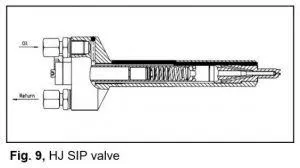Aug . 28, 2024 02:26 Back to list
Custom Force in Hydraulic Cylinder | Precision Hydraulic Solutions
The Role of Custom Force in Hydraulic Cylinders
Hydraulic cylinders are critical components in various industrial applications, providing the necessary force to perform tasks such as lifting, pushing, pulling, and pressing. One of the significant aspects of hydraulic cylinders is the ability to customize the force they generate, which can significantly enhance their efficiency and effectiveness in specific applications. Understanding the concept of custom force in hydraulic cylinders can help engineers and technicians optimize machinery for their unique operational needs.
Hydraulic cylinders operate based on Pascal's principle, which states that pressure applied to a confined fluid is transmitted undiminished in every direction. The force generated by a hydraulic cylinder is determined by the pressure of the hydraulic fluid and the surface area of the cylinder's piston. This relationship can be expressed with the formula
\[ Force (F) = Pressure (P) \times Area (A) \]
Where - Force (F) is the output force of the cylinder, - Pressure (P) is the hydraulic pressure, - Area (A) is the cross-sectional area of the piston.
custom force in hydraulic cylinder

Customizing force within hydraulic cylinders involves manipulating these variables to meet specific requirements. For instance, increasing the pressure can generate more force, but it is essential to consider the cylinder's material and design constraints, as excessive pressure may lead to failure. Alternatively, a larger piston diameter can also produce greater force, making it crucial to strike a balance between size and operational efficiency.
One key advantage of custom hydraulic cylinders is their ability to be tailored to specific applications. Industries ranging from construction to manufacturing require different force levels depending on the tasks at hand. For example, a hydraulic press used in metal forming may require a tremendous amount of force to shape material, while a hydraulic lift in an automotive shop needs just enough force to safely elevate vehicles. Custom hydraulic cylinders can be designed to meet these diverse requirements, ensuring optimal performance.
Moreover, customizing the force of hydraulic cylinders allows for enhanced precision in control. In applications where exact movements are critical, such as robotics or CNC machining, adjusting the hydraulic pressure and piston area can lead to improved accuracy in positioning and operation. This precision can significantly reduce waste and increase productivity, allowing businesses to operate more efficiently.
It's also vital to consider the operational environment when designing a custom hydraulic cylinder. Factors such as temperature, potential exposure to corrosive substances, and the frequency of use can impact the choice of materials and design. Selecting the right seals and coatings can help ensure that the cylinder maintains its performance over time, even under challenging conditions.
In conclusion, the customization of force in hydraulic cylinders is an essential aspect that can greatly enhance their functionality across various industries. By understanding the relationship between pressure and area, engineers can design hydraulic systems that provide the exact force necessary for specific applications. This capability not only contributes to operational efficiency and precision but also fosters innovation in hydraulic technology. As industries continue to evolve, the demand for custom hydraulic solutions will undoubtedly increase, making it a vital area of focus for engineers and manufacturers alike.
-
Fork Lift Power Units - Hebei Shenghan | Efficiency, Reliability
NewsJul.13,2025
-
1.5-Ton Turbocharged Cylinder-Hebei Shenghan|Hydraulic Solution,Energy Efficiency
NewsJul.13,2025
-
Auto Hoist Power Units-Hebei Shenghan|Efficiency&Industrial Lifting
NewsJul.13,2025
-
Double Acting Power Units-Hebei Shenghan|Hydraulic Solutions,Industrial Efficiency
NewsJul.13,2025
-
1.5 Ton Lifting Cylinder 70/82-40-290-535 - High-Performance Hydraulic Solution | Hebei Shenghan
NewsJul.13,2025
-
Fork Lift Power Units - Hebei Shenghan | Efficiency&Reliability
NewsJul.13,2025
